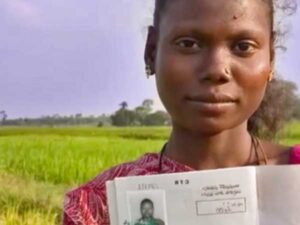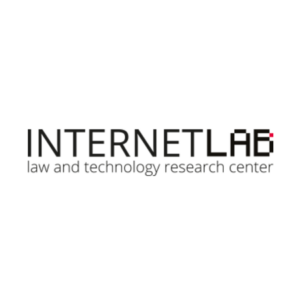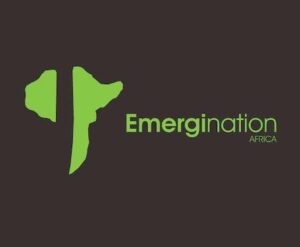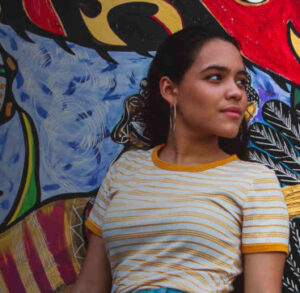YouthBuild USA reengages young people who dropped out of school and supports them with education and career training opportunities. Programs center around technical assistance, leadership development, innovative program enhancements, and advocacy.
John Valverde of YouthBuild USA spoke with Ashley Hopkinson on November 21, 2023. Click here to read the full conversation with insights highlighted.
Ashley Hopkinson: Can you please start by introducing yourself, the problem YouthBuild is trying to solve and how you see yourself working towards that change.
John Valverde: I’m John Valverde, President and CEO at YouthBuild USA. There are, depending on the report you see, at least 5 million young people aged 16 to 24 out of school and out of work in the United States. And outside the United States that number can be as high as 350 million, 250 million depending on where you look. And YouthBuild seeks to engage these young people, most of whom dropped out of school in the United States. Outside the United States there are other issues that we can talk about a little bit later. But we re-engage them, offering them an opportunity to complete their education, advance their career training so that they can explore different career pathways, develop as leaders, and provide service to their communities. We provide all the wraparound services for this marginalized, economically disadvantaged population. I’m not a big fan of the labels, but I need to use the language that’s out there. I do prefer to say young people with very high barriers to their success.
YouthBuild engages these young people, stands with them to support their power and potential to transform their lives, the lives of their families, and the lives of their communities through this very comprehensive model. Young people are in a YouthBuild program that is like a classroom or a school, but 50% of the time is in the classroom and 50% of the time is outside the classroom doing more hands-on engaged work and training. And a unique element of YouthBuild is that so many of these young people who do come from impoverished communities that have a lot of wonderful, beautiful things, assets, need to choose between a job or going to school.
YouthBuild provides a stipend that offsets their living expenses so that they can remain in the program for the period of time they’re with us to complete these goals. And then of course, completing high school or an equivalent then positions you for more opportunities and career options. And the training that’s provided at YouthBuild gives you that chance to. But one of the elements I probably love the most is the service element where young people who were often considered the beneficiaries of service and public assistance become the providers of service and contribution in their community, which not only impacts how the community sees them going forward, but also how they see themselves and maybe most importantly, how they see each other, their peers. And they begin to build connections, build community.
And ultimately our goal at YouthBuild is that our programming and all of these supports and training from caring adults, mentoring and coaching from these caring adults who are academics and instructors and coaches, results in them realizing the power they have to navigate the world, to contribute to their communities, and to contribute to resolving and solving the biggest problems that their communities face. And that power, that agency gives them the confidence they need to move through life in a very different way than when they started with us. And we think this is a population that is often overlooked. This opportunity, this youth population of 16 to 24 is out of school and work.
YouthBuild is proud to stand with even a subset of that opportunity, youth population, those with the highest barriers, those who dropped out of school, those in the lowest income and highest unemployment, highest crime rate communities. We are working with the most challenging population, and they’re not in the K through 12 system, they’re not in the post-secondary system, they’re not in public ed period in any way. They’re in the gap in the middle and they’re forgotten and passed over generation after generation. YouthBuild chooses to stand in that gap.
Ashley Hopkinson: That’s wonderful. So the young people are 16 to 24, how are you engaging them? How are you reaching them?
John Valverde: Well, first I think it’s important to just note that we do get young people who are coming through or out of the foster care system. We get young people who’ve been suspended or expelled from the public education system so they come through us that way as well. We get young people reaching our doors who’ve been involved with the criminal justice system in some way. So we get referrals from probation, for example, or parole officers in some cases. But the main way young people find us is through graduates of YouthBuild. And many of them were referred by family members. As you can understand and know from experience, so many of the families are single parent households. Many of the families have grandparents raising the young people.
And because of outreach and support in communities that talk about YouthBuild, very often we get a referral from grandma, and that’s wonderful. But I think the biggest [referral is by] word of mouth from someone who found YouthBuild through all these ways that I’ve just mentioned. They then tell others about it and share their experience and that encourages them to enroll. So that’s how we find our young people.
Ashley Hopkinson: What do you think makes your program distinctive?
John Valverde: I have a few thoughts on that. The first would be that when you compare us to other youth serving organizations or you benchmark us with other youth serving organizations, we are one of the only organizations that works at the nexus of three spheres, positive youth development through a YouthBuild lens. I can explain why I add “YouthBuild lens”, youth workforce development. So many youth serving programs actually just apply an adult workforce development approach onto it. So we think the youth workforce approach is important. And the third sphere is educational programs.
There’s thousands who do educational programs, thousands who do workforce programs, thousands who do both of those, but not the third element of positive youth development. [This is done] through a YouthBuild lens of love, respect, high expectations, belonging, power, and agency. More than the five or six C’s of positive youth development, really our version of it. So that’s one. The nexus of the three spheres. The other is throughout our history, and now you hear more about it, but this is still distinct and unique for us, the centering of youth voice and leadership. That is key to our work.
We believe in a learner-centered approach, tailoring education and other activities and opportunities of the YouthBuild program to the needs and interests of the young person. They have a say in co-designing what they experience at a YouthBuild program, and the leadership qualities and the attributes they develop as a result of being able to use their voice in that way. This includes advocating on Capitol Hill here in the United States, mobilizing and challenging unfair laws regarding education in South Africa, running for office and becoming elected officials. And then even informing school boards in their community, sharing how the public education system did not work for them and why. And the kinds of policy reforms and recommendations that would improve things for young people following behind them. That’s also unique to YouthBuild, that leadership element.
Then finally, I noted this earlier, but just to mention, the community service aspect is not connected to criminal justice punishment in some way, and is actually connected here in the United States and outside the United States to a national service approach. In the United States, YouthBuild USA is one of the largest AmeriCorps grantees. But we are one of the only national grantees that supports opportunity youth, 16 to 24 out of school, out of work, in engaging in national service, which is often viewed as a gap year for more middle class young people who have gone to college or are planning to go to college. We’re working with a very different population, which adds diversity to the national service movement here in the United States, and we’re very proud of that. We’re also one of the only networks globally that operate in urban, suburban, rural, and tribal communities. So those are several of the ways I think YouthBuild is distinct and unique in the world.
Ashley Hopkinson: Is the last point, the geographic diversity, very important to you from a particular perspective? Do you feel like sometimes youth work is concentrated in one area more than another, like in urban centers?
John Valverde: I think that’s true, and we do see that. Another distinction of YouthBuild is that we’re a federal program. So we actually have a line in The White House budget each year and the federal budget each year through the appropriations process called YouthBuild. And that’s 105 million supports YouthBuild programs across the United States. And most of the programs that are funded through that funding stream are not in rural or indigenous and tribal geographic areas. So I would say that’s even true for the YouthBuild network.
But the need in those areas has created the demand for what YouthBuild offers, and family foundations and other funding streams support work in rural settings. And then this rural indigenous approach when you think about it outside the US because we’re in Mexico, we’re in Brazil, we’re in South Africa, we’re in Kenya, we’re in Ecuador, we’re in Costa Rica, where I’m from, my family’s from. It is even more important, the emphasis on this rural element and indigenous tribal element. So yes, I would say that there is much more focus in urban settings, and yet the need in rural, tribal and indigenous settings is widely known, and still not supported at the level that’s necessary.
Ashley Hopkinson: Do you have a story of impact that you can share, something that comes to mind that illustrates how this work is making a difference?
John Valverde: Absolutely. If you’ll bear with me, I’ll share a little bit of my story and then I’ll connect it to our young people. I grew up raised by a single mother here in New York City, struggling to make ends meet, really relying on the support of family and friends to get through it. I was good in school and I loved school actually, and sports. My mother really emphasized education as the most important thing for me. And I made it through high school and went to college on a full scholarship. I wanted to be a doctor, and I made a terrible decision when I was 21 years old that resulted in my incarceration. And in the end, I served 16 years in prison.
During my incarceration, I reconnected with my father and he said, “Accept full responsibility for your crime, seek to make amends and say yes as much as you can to help others, and you’ll find purpose and meaning and be free.” And I wasn’t sure what he meant by all of that, but I believed that he wanted what was best for me. So I made every effort to do that, to try and contribute to the lives of others. And I went on to complete my bachelor’s degree in prison, my master’s degree in prison, to create two nonprofits that still exist today, focused on opportunities in higher education for incarcerated people. I was the first incarcerated person to take the LSAT, the first incarcerated person to be accepted to law school while still in prison. The first incarcerated person to have adjunct professor status. I taught at Mercy College and Nyack College while I was inside for 10 years, and I accomplished a lot while I was in prison. I’m really grateful and proud of it.
I was able to advance my education, my career training and aspirations, my leadership goals, provide service to the community inside, and receive the wraparound services. So while I am not a YouthBuild graduate, my story is a YouthBuild story. YouthBuild is about second chances and in so many cases for our young people, really about real first chances for young people who’ve never really had that at the opportunity they deserve. And when I was released, I went to work in criminal justice fields in the nonprofit sector, and I eventually was appointed the President and CEO of YouthBuild USA. And at the time, I just started my eighth year, but at the time I was the first formerly incarcerated CEO of a nonprofit with a global mission.
As humbling as that is, I truly believe it means little or nothing if the young people of YouthBuild don’t believe that so much is possible for them, and that they have the support that they need from caring adults to realize their dreams and goals. And if it doesn’t inspire society to really believe in second chances or real first chances. I didn’t know this when I first started, but as many as one third of the young people of YouthBuild self-report having had involvement with the criminal justice system, which likely means it’s 50%. I have become a role model for those young people and believe that their lives are not over. YouthBuild can be a place where their transformation can be realized, and they can achieve their goals and have a career and maybe become a CEO one day.
There are so many stories in our network of young people like that that have come to us with that experience or from the foster care system or from being kicked out of three, four high schools in their young lives who reach YouthBuild and experience a sense of love, belonging, and family support. They’re graduating, completing their high school diploma in nine months. It’s just incredible. And I used to think that people were only showing me the superstars of the YouthBuild program, but now our evaluations, our RCT’s, all of it speaks to the reality that YouthBuild makes a difference. The model works. And I’m very proud to lead this organization and lead a movement that stands with young people who are often forgotten and left behind.
Ashley Hopkinson: How do you at YouthBuild measure success? What does success look like to you and what do you use as evidence that you’re making progress?
John Valverde: Well, unfortunately, I didn’t get the person’s name who said this. I was at an event recently in Boston, and she said, “The importance of storifying data.” So turning the data into these stories and bringing amazing storytellers, and that’s definitely true for us. I will say we do have the requirement of delivering on quantitative data. Because we’re a federal program, really considered a pre-apprenticeship program for the Department of Labor, there’s going to be workforce metrics involved. Everything from placement and employment retention and employment wage, wage increase, all of those things that you’ll find in any workforce development program.
We will also have the educational requirements. So literacy and numeracy advances, of course, graduation completion of your diploma requirements, attendance, things like that. But we are just really building out now. It’s an exciting project. We’re about halfway through it now, funded by the Templeton Foundation to evidence-based YouthBuild love, which is the positive youth development piece through the YouthBuild lens that we think is more than the standard or common positive youth development that you hear about out in the world right now. We think it’s much more than that.
That is going to be more of the storified data, qualitative data that we will ask young people, which we see over and over again and I alluded to a little bit. Like when they first come into the program, when you ask them, “Do you feel you have the power to contribute to solutions in your community? Do you believe that you have the agency to navigate your way to getting your own job? Do you feel…” And then three months, six months, nine months later, you ask those same types of questions and they’re saying, “Yes, I now feel I have the power to make a difference in the world. I now feel I have the agency to pursue any opportunity and navigate it to a great place and great outcome for myself.” And that for me really is what YouthBuild is because what we don’t want to do is recreate the metrics of the public education system that didn’t work for young people, and now make that the measure of success at a YouthBuild program.
We also don’t want to just use the traditional workforce measures that work for adults.There are these standardized kinds of metrics, the one size fits all that we’re plugging people in as the measure of success. We need to do some of that because it’s required by our funding, our public funding especially. But we believe it’s much more important to ensure we go beyond that to the qualitative, to the stories and these stories of power and agency to navigate the world, make connections for yourself that build your social capital, find mentors and coaches, win on that interview with confidence. We think these are the measures in the end that determine whether or not a young person is going to succeed after YouthBuild, and those are the metrics that are very important to us.
Ashley Hopkinson: Can you share any insights or lessons that can be taken from the work you do that perhaps somebody else could learn from?
John Valverde: The most important thing that comes to mind for me is our ability, our training, our discipline around truly seeking to see, hear, and understand young people as individuals full of power and potential to do good in the world, versus seeking them for what people might call their deficits or their challenges or their barriers. Super predator at-risk language that resulted in over-incarceration of young people and the fear that that created. I think there’s still remnants of that. And we as adults often don’t see young people as assets, we see them as burdens, and we see them as people who haven’t lived long enough to offer anything to the world.
Our experience, whether you look at it through a DEIAB [Diversity, Equity, Inclusion, Accessibility and Belonging] lens or through a youth centered approach, is that when you bring young people to the table, it enriches the solutions that are possible. And the other learning I would share is centering young people and ensuring that they have a voice and believing that young people who are closest to the problems are closest to the solutions, does not mean that they don’t need adult support to realize those solutions and get the traction they need to make a difference. It is a both and. It’s not one or the other. And that’s been a powerful learning, that it is a partnership with young people versus what we have to offer them only.
Ashley Hopkinson: I think we learn as much from things that go well as we do from things that don’t go as well. Can you describe something that you might’ve tried that didn’t work and what you learned from it?
John Valverde: Mental health is such a big issue right now for young people everywhere, and we have taken the approach of being trauma-informed and what that means in the world. I think we initially went too far on having trauma mean for some people “broken and needing of fixing” and even healing runs that risk of being interpreted. And of course, the concern would be that an employer would be afraid to hire a young person who’s experienced a lot of trauma, and if all of the YouthBuilds young people have experienced trauma, is that going to result in problems that our company [might come up against].
I think an area where we learned a lot was leading with trauma as something in need of fixing, versus seeing trauma, and the fact that the young person is at a YouthBuild program, as resilience instead. That despite what a young person has been through, they should not be defined only by the worst thing they’ve ever done or that’s happened to them or their zip code or the conditions of their family or community, but by who they are today and who they can be in the future. [It should be defined by] the resilience that it has taken for them to overcome all of that, which should be attractive to an employer, to a partner, to a school, a university that wants to bring more young people from these communities in. I think that’s a lesson we’ve learned over the years.
Ashley Hopkinson: Earlier you talked about deficit framing the language we use to describe youth and looking more toward the characteristics as resilient, and framing them as assets.
John Valverde: Absolutely. I would say the importance of ensuring that young people understand what we mean when we share that, them sharing their stories is important. They sometimes think sharing all their trauma and then stopping at the place of, “oh, all the trauma that I’ve experienced” versus from there describing and despite that, “I’ve overcome that to be the person I am today to be contributing to my community, to be a leader.”
I think that’s the other piece of it. So while we believe that about them, if storytelling only presents, let’s say to a government agency, a potential funder, “please help us because look how traumatized we are” versus “this is what we’ve been through”, this is who we are and where we are today despite all of that, and it’s through YouthBuild that I was able to gain the confidence and agency that I have today”. I think ensuring that our storytelling goes beyond the trauma piece to the resiliency piece [is important].
Ashley Hopkinson: How do you feel like the organization itself is working towards advancing systems level change?
John Valverde: What’s really exciting about YouthBuild right now is that we’ve pursued and completed a network optimization study. So we did a 360 of us as a support center. We got feedback from our entire network of programs, 275 programs in 15 countries. And then partners, employers, funders, and of course, young people, alumni of YouthBuild. So it was a very comprehensive effort that resulted in a new strategic vision for us and the priority actions that will enhance the support that we provide to the network in a much more equitable way. It’s not just DOL [Department of Labor] funded programs or AmeriCorps funded programs, but every YouthBuild program receiving support from us.
We’re really excited about that because the uniting of our network means that our voice as a network can be a stronger movement for opportunity for youth. These young people aged 16 to 24 who are out of school and out of work, not just the subset that YouthBuild may be focused on that has more barriers. But all young people in that situation and other youth-serving organizations where our model has proven effective with these young people with the most barriers, and has elements that are critically important for all youth serving organizations.
We are now positioned to be more of a leader in the opportunity youth policy creation or recommendation or reform space, which is our intended contribution to the systems change work. I think the other piece is, because I mentioned this earlier, we work with a group of young people who have fallen in that crack and are not receiving services in other spaces, that we’re perpetuating generational poverty by not addressing that issue. [An added element of] systems change is that we’re engaging a population that no one else even maybe wants to engage for other reasons. We see that as an element of systems change. We engage employers.
We have several corporate partnerships with different companies, including global or multinational companies, and we’re informing employers on how to work with young people with the barriers that our young people have. We believe that’s critically important to economic and social mobility and systems change for young people and the employers themselves who are looking to diversify their workforces – to really hire more in the communities in markets where they exist. And in order for that to be true, developing the muscle to have more of a mentoring coaching approach to working with young people has been key for us as well.
Those are a few examples of the ways that we’re engaged in systems change work. And we truly believe that when we evidence-based our positive youth development through a YouthBuild lens approach, that it can also be utilized by all youth serving organizations and really contribute to global DEIAB work. We had a presentation recently from YouthBuild South Africa on apartheid, and you realize that the way the world is changing globally, the number of young people on the continent of Africa, for example, the global challenges that we’re seeing, we believe that YouthBuild has a role in contributing to systems change globally.
Ashley Hopkinson: What do you feel is needed from other actors in this space of helping to advance good quality outcomes for young people?
John Valverde: Number one is to not only look and fund and support efforts in the K through 12 space or the post-secondary space, but remember that there’s a population that isn’t in either of those spaces and not working. I think that’s the key thing that partners realize and see – that there’s a gap and there’s lives involved here, and these lives can be the ones that contribute to your company and our economy, all of that. That’s why we call them opportunity youth. They’re an opportunity for companies, employers, our country, the world, and they’re just looking for an opportunity. So that’s the framing there.
The other thing I think about is seeing young people for what they can contribute. Just the sheer numbers of young people now in the world means that we need to figure out how to galvanize that energy for good in the world. Seeing young people as assets, and for what they can contribute, and their gifts and talents and intellect is another thing we need from partners. We need a movement that sees young people differently and for the power and potential to contribute. That’s critically important as well.
Ashley Hopkinson: Aside from funding, are there any challenges that you faced or you’re currently facing that you’re working to solve?
John Valverde: We’re thinking about a lot of things. Because we’re a global organization, we are very closely monitoring what our role can be in climate change and disaster relief efforts. We do a bit of both, because many YouthBuild programs are a conservation course, so they’re doing some climate change work there. But our work in Haiti is so full of starts and stops because of hurricanes and earthquakes, and the political unrest there. So we’re always thinking about climate change and disaster relief, and what YouthBuild can contribute in those spaces.
We’re also closely monitoring the education space. What will AI’s role be in that? How will it shift education work specifically? What does that mean for YouthBuild and youth-serving organizations and systems change work? So we’re closely monitoring what AI could mean to us. And then we’re definitely thinking about the future of education, maybe turning more towards community hubs and homeschooling, a different type of approach to education. [We are also thinking about] YouthBuild potentially being an anchor for a shift in the future of public education as a space where it is not public education, but a space where the type of lifelong learning and leadership can happen in community. So we’re thinking about ways to position YouthBuild for what we anticipate are big changes coming in the public education system. Those are a few examples.
Ashley Hopkinson: Are there any limitations that you feel that are a part of the work that you do?
John Valverde: There are always constraints. Because we’re a federal program as well, any change in Congress can impact us. Obviously, a change in the presidential administration can shift the priorities of a youth bill program or a federal program. So I wouldn’t say we’re at the whim of that. It’s just the reality that we’re dealing with. Our ability to remain agile, nimble, have a strong uncertainty and change management muscle as an organization and as a network, we think is very important. And we think there’s a real opportunity still constraint in this positive youth development or science of belonging or pedagogy of agency. And there are a lot of constraints around that because of standardized testing and one size fits all approaches. We think innovation in the education and workforce space, maybe through AI and of course, other community-based approaches like the one I described, YouthBuild can contribute and be an anchor and strengthen an ecosystem that centers young people.
Ashley Hopkinson: What is your vision for the next few years? How do you see YouthBuild evolving in the next five years?
John Valverde: The work that we’re doing now, and that we’ll do in the next several years to unify our network so that we can actually be a movement for young people, is incredibly exciting to me. YouthBuild loves our approach that will support our staff across the globe in knowing the difference, the measurable difference they’re making in the life of a young person, even if they don’t see those results and outcomes for two, three years and sometimes more later. That a staff person knows that they’re contributing to this young person’s life. That is super exciting to me. I believe we will continue to evolve in the career pathway space. We started [with youth] in construction, did that for 27 years as their only career, and now we’re in manufacturing, we’re in healthcare, we’re in IT. So I see us evolving to expand, not just to food service and hospitality, but other sectors that will support young people.
I see us more able to support young people of all gender identities. I believe that’s going to be a big part of our work. And the young people of YouthBuild, 85% of them are young people of color. So I believe we will become a greater force in the anti-racism DEIAB work in this country and influence countries outside the US. We’re not in great shape on this stuff, but there are countries outside the US that are even farther behind that we will influence that work in other spaces as well. And finally, it is the employment point where more employers, more corporate partners will turn to YouthBuild for diversifying their workforce, and begin to contribute in a different way to the ecosystem that we need if we’re going to save the planet, heal divisions in any way, work together and create a world that works for more people. And one day, well, as many as possible.
Ashley Hopkinson: Excellent. Thank you so much for talking to me today.
Click here to read the full conversation with insights highlighted.
Ashley Hopkinson is an award-winning journalist, newsroom entrepreneur and leader dedicated to
excellent storytelling and mission-driven media. She currently manages the Solutions Insights Lab,
an initiative of the Solutions Journalism Network. She is based in New Orleans, Louisiana.
* This interview has been edited and condensed.
Find other social change organizations working with youth.







